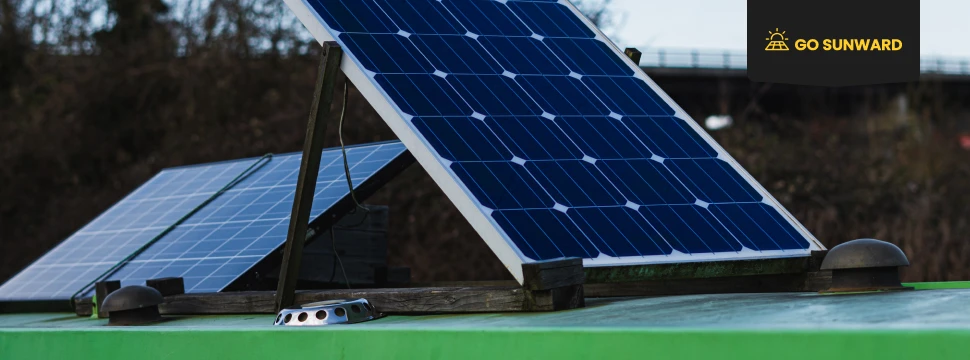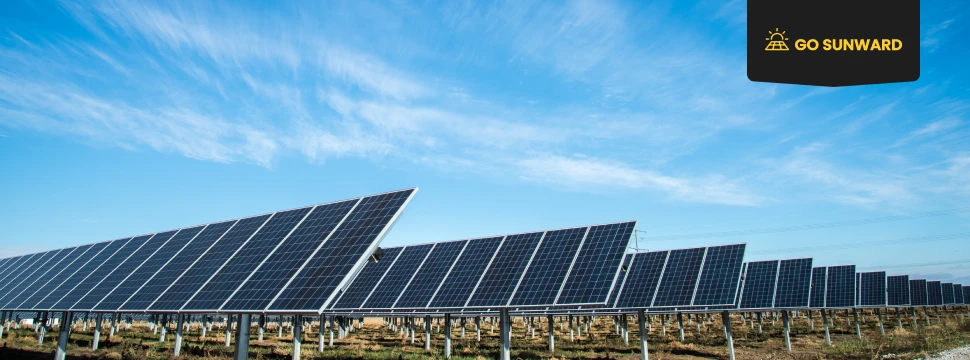What Is An Energy Saving Light?
In today’s sustainability-focused world, energy-saving lights are a prime example of innovation. These lighting options not only provide adequate illumination for our surroundings but also play a pivotal role in minimizing energy usage and reducing our impact on the environment.
This article aims to answer the question: what exactly is an energy saving light. In doing this, we will delve into the different types of energy-saving lights, the energy efficient technology they use, their benefits and how they can contribute to the global sustainability transition.
Does Lighting Use A Lot Of Electricity?
While lighting technology has advanced, it’s important to note that lighting remains a significant contributor to overall electricity usage. In particular, traditional incandescent bulbs are highly inefficient, as they emit a significant amount of energy in the form of heat. This inefficiency highlights the importance for more energy-efficient lighting solutions.
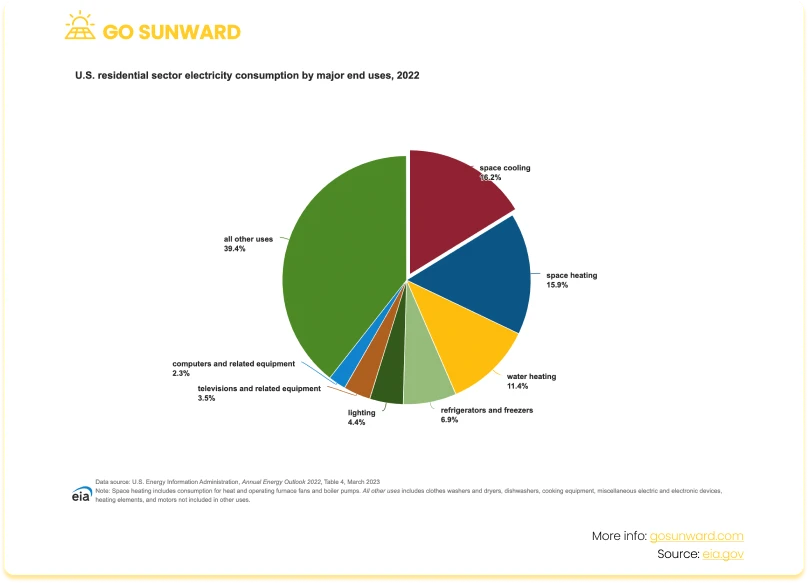
What Is An Energy Saving Light?
So it is important to reduce electricity usage from lighting but what exactly is an energy saving light? Energy-saving lights mark a notable advancement in artificial lighting. They utilize advanced technology to greatly reduce electricity consumption compared to traditional bulbs, which are known for their high energy usage.
These innovative lights, including types such as compact fluorescent lamps (CFLs) and light emitting diode (LED) bulbs, mark a significant shift in lighting efficiency. Unlike their conventional incandescent counterparts, energy-saving lamps operate on a principle that maximizes luminescence while minimizing energy waste. This is achieved through advanced engineering and unique mechanisms that distinguish them from traditional filament bulbs.
The heart of their efficiency lies in the methodology employed to produce light. Unlike incandescent bulbs, which generate light by heating a filament to the point of incandescence, energy-saving lamps employ alternate mechanisms such as the use of semiconductor materials in LEDs or the excitation of gas molecules in fluorescent and halogen bulbs. These methods significantly reduce energy consumption because they generate far less waste heat, making them more efficient at converting electricity into visible light. As a result, they not only save energy but also have a lower environmental footprint by reducing greenhouse gas emissions and decreasing the strain on energy resources. This shift toward more sustainable lighting solutions aligns with global efforts to combat climate change and promote environmental stewardship.
Types of Energy-Saving Lights
Light-Emitting Diodes (LEDs):
LED bulbs are the top energy-efficient choice, offering significant cost savings. They produce 40 to 80 lumens per watt, saving energy while lasting long and staying cool. LED prices have been dropping and will likely continue to do so as they become more accessible. Despite the initial higher cost, their long life and energy efficiency result in substantial savings over time. LED bulbs can last 25,000 to 50,000 hours or more, far surpassing the 1,000-hour lifetime of incandescent bulbs.
Unlike incandescent or fluorescent bulbs, LEDs emit light through electroluminescence, converting electrical energy directly into light. In an LED, a semiconductor material, often made from compounds like gallium, arsenic, and phosphorus, contains positively charged “holes” and negatively charged electrons. When an electric current is applied, electrons move in from the negative terminal, and holes move in from the positive terminal. These charged particles meet at the “p-n junction,” the boundary between the positive and negative sides of the semiconductor. Electrons falling into holes release energy as photons, creating electroluminescence—converting electricity into light.
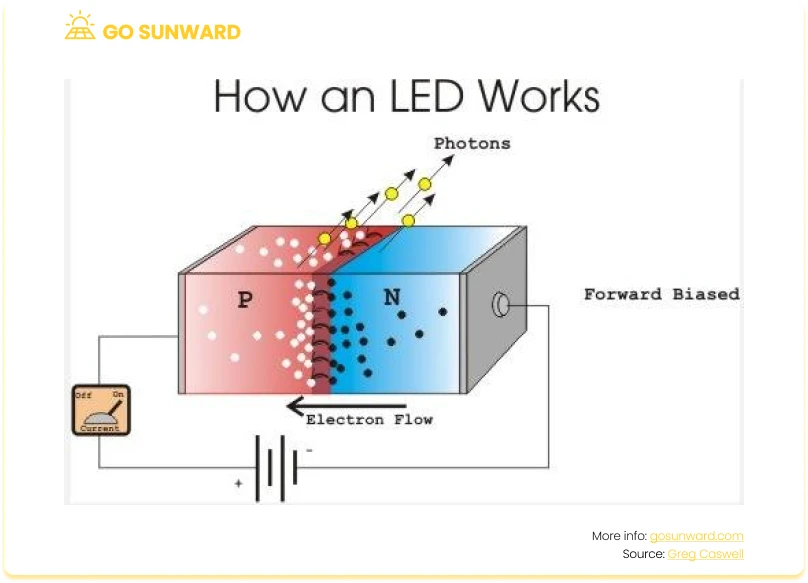
Compact Fluorescent Lamps (CFLs):
CFLs, although less efficient than LEDs, outperform traditional incandescent bulbs. They have a lifespan of roughly 8,000 hours compared to LEDs’ impressive 25,000 hours. While CFLs consume more watts to produce the same brightness as LEDs, they maintain their energy efficiency. Running a CFL for 25,000 hours will cost approximately $50, slightly more than using LEDs. It’s worth noting that CFLs are initially priced at half the cost of LEDs, making them more budget-friendly choice.
CFLs operate by utilizing an electrical current to excite gas molecules within the coiled tube of the bulb. This excitation prompts the gas to emit ultraviolet (UV) light, which, while invisible to the human eye, is the key to CFL illumination. The inner surface of the CFL tube is coated with a phosphorescent material, and when the UV light interacts with this coating, it triggers fluorescence, causing the phosphorescent coating to emit visible light. This visible light is what we perceive as the CFL’s illumination, making them more energy-efficient than traditional incandescent bulbs due to the conversion of electrical energy into visible light with minimal heat loss.
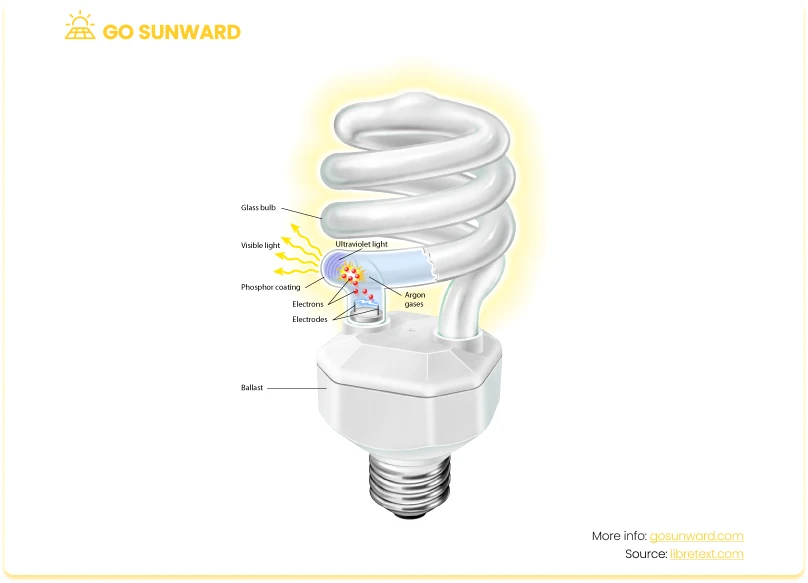
Halogen Incandescent Bulbs:
Halogen bulbs, distinguished by the use of halogen gas, often boast extended lifespans of 2,000 to 4,000 hours or more. This energy saving light translates to less frequent replacements and cost savings. Their efficiency surpasses that of traditional incandescent bulbs because the presence of halogen gas allows for higher filament temperatures, reducing heat wastage and maximizing light output per watt. However, while halogen incandescent bulbs represent an improvement over conventional incandescents, they remain less energy-efficient when compared to other technologies like LEDs and CFLs.
Halogen incandescent bulbs operate using a process similar to traditional incandescent bulbs. They produce light by heating a filament, usually composed of tungsten, until it emits visible light. However, what distinguishes them is the inclusion of a small amount of halogen gas inside the bulb. This halogen gas serves a unique purpose: it facilitates the recycling of the tungsten filament, extending its lifespan. When the tungsten filament heats up, some of the tungsten evaporates and forms a vapor in the bulb. The halogen gas interacts with this vapor, preventing it from depositing on the inner surface of the bulb. Instead, it re-deposits tungsten atoms back onto the filament, effectively rejuvenating it. This continuous recycling process allows halogen bulbs to maintain their brightness and last longer than traditional incandescent bulbs, with less wasted energy.
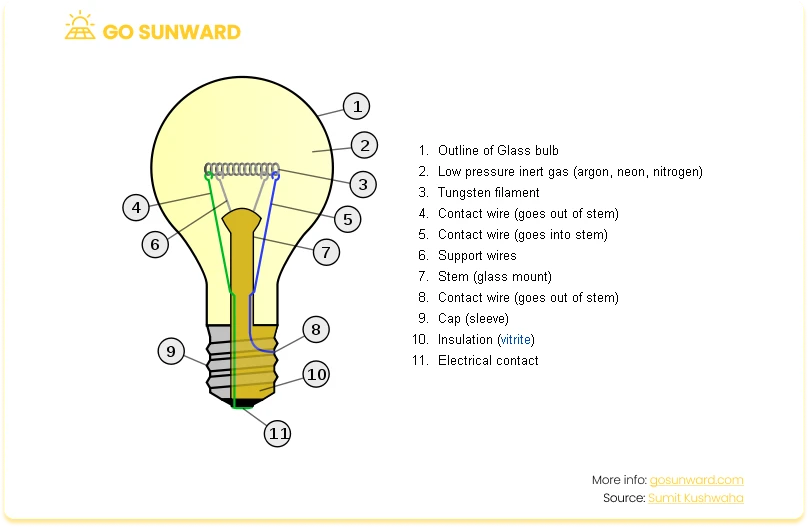
How to Identify Energy Saving Light Bulbs
Determining the energy efficiency of a light bulb is the first step in finding the most energy-saving lighting options. You can do this can by quite easily inspecting the packaging. Look for the ENERGY STAR® label, which is a government-endorsed symbol indicating high energy efficiency. Additionally, check the packaging for details regarding the bulb’s wattage and lumens. Wattage reflects the bulb’s energy consumption, with lower-wattage bulbs typically being more energy-efficient. On the other hand, lumens provide information about the bulb’s brightness, enabling you to select the appropriate illumination level for your specific needs and energy savings.
Future Trends & Innovations
As technology continues to advance, energy-saving lighting is well-positioned for further innovation. These advancements may include more efficient LED designs, improved materials, and enhanced control systems. Expect to see even greater energy efficiency, longer lifespans, and improved color rendering in the next generation of energy-saving lights.
Smart lighting is a rising trend combining energy efficiency and intelligent control systems. This technology allows lights to adjust their brightness based on occupancy, natural light levels, and user preferences. It can also integrate with home automation systems and be controlled remotely via smartphones and voice commands. Smart lighting not only optimizes energy use but also enhances convenience and comfort for users.
Energy-saving lighting is also playing a pivotal role in the development of smart cities and sustainable urban planning. Cities are adopting intelligent lighting solutions to reduce energy consumption, enhance safety, and improve overall quality of life. These systems utilize sensors and data analytics to optimize street lighting, adapting brightness levels in real-time and reducing unnecessary illumination. The result is a reduction in energy consumption, lower maintenance costs, and a more environmentally sustainable urban environment.
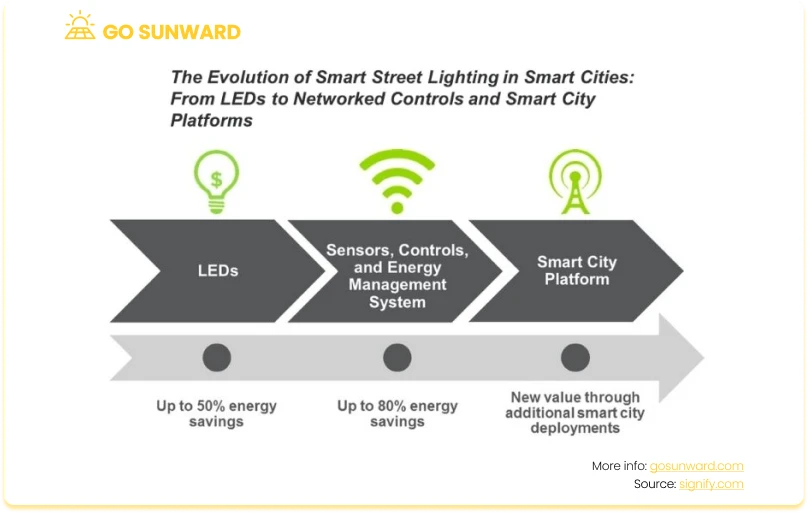
Conclusion
Energy-saving lights demonstrate human innovation and a commitment to global sustainability. From LEDs to CFLs and beyond, these lighting solutions offer tangible benefits ranging from reduced energy consumption and financial savings to environmental preservation. As individuals and communities embrace the transition to energy-saving lights and sustainable solutions, they contribute to a brighter, more efficient, and low carbon future for future generations.


